After 45 years working for Nickerson I have decided to move on to the next stage of my life, which is retirement.
I thought it was ironic that on my last day on farm I’ve taken a picture of one of the best crops of winter wheat I have seen in my area which happened to be Claire, a winter wheat which must be over 25 years old. It has been a pleasure helping Nickerson to introduce new varieties to the market and hear the success stories of those that we have introduced, too many varieties to mention.


A massive thank you to all my customers, if it was not for your support and loyalty I would definitely not have lasted the 45 years working for the company and I wish you all every success in your future cropping. I know I am very comfortable leaving the business in a very safe pair of hands – those of Douglas Bonn. We have enjoyed meeting most of you over the last three months and he will continue to look after your requirements in the future.
Again thank you for your support I wish you well
Nick Wallace.
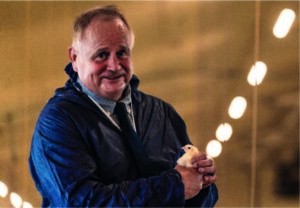
Farms across the country have had a tough time over the last few years growing OSR. Many growers have cut back, and several have removed OSR from their rotation altogether. However, figures from Defra are showing that the area of OSR grown has increased in the Southeast of England. So, do the farms of the south know something the rest of the country does not?
The Southern part of the UK was decimated in 2019 with the OSR crop having the weather and the dreaded Cabbage Stem Flea Beetle (CSFB) against it. Many growers took the hit and swore they would never grow OSR again. However, many have kept going and have learnt to live with this pest.
Growing the correct variety; OSR is a high input crop so choosing a high yielding variety that can offer maximum return is key. LG Armada is the highest yielding OSR variety on the AHDB recommended list. Along with high yield, LG Armada also has pod shatter resistance, Turnip yellows virus resistance along with good resistance to light leaf spot and stem canker. Vigour varies between varieties, some have better Autumn vigour and some better Spring vigour, speak to your local seed specialist to find out which variety will suit you best.
Drilling timing and soil moisture; this is key to a fast establishment farmers that drill into moist seedbeds with rain in the forecast have more of a chance to beat adult CSFB damage, there is no doubt that we go into danger zone when the OSR emerges and then runs out of moisture. We need to be looking at the forecast rather than the calendar.
Companion and trap crops; There has been some anecdotal evidence of success with companion crops, especially when these companion crops are established before the OSR is drilled, the payments that can be claimed through the new Single Farm Incentive makes this even more attracting. OSR volunteers can also act as a trap crop and divert CSFB away from adjacent cash crops. When trap crops are destroyed, CSFB eggs or larvae die. In trials, the approach reduced adult CSFB infestation (by up to 88%) and damage (by up to 76%) in the oilseed rape cash crop. However, benefits were variable and not always observed.
OSR prices rising? Well, there are two things you can never really predict in farming, one being the weather and the second being markets. Prices have come back a long way since the immediate aftermath of Russia’s invasion of Ukraine but are starting to climb again at the time of writing in late May. There are also other reasons for optimism, the EU is set to ban unsustainable palm oil imports this year and this could lead to producers switching to rape seed oil instead, a cut in Canada’s canola production estimate for 2024/25 due to spring acreage shifts to wheat on the back of poor growing conditions has also been supporting prices more recently.
So, there is much reason to be optimistic for a crop that we know works well in cropping rotations, spreads the harvest workload, and has, and can still return a healthy gross margin.
Reduced cultivation could increase maize maturity timesTrials are underway in Cornwall and have previously been run to show the effects of strip till drilling compared to conventional ploughing cultivation and its positive effects.
The main benefits of no-till being; a reduction of costs in time and diesel, to help improve soil health and organic matter and to reduce chances of capping and soil erosion. Although no significant yield differences have been found, are there any other differences that need to be considered when trying an alternative cultivation techniques?
Picking a maize variety with a maturity FAO that fits within your rotation and planned harvest date is an important decision, especially with the prolonged bouts of weather extremes we are currently experiencing, but does altering your drilling method have any bearing on this? Some farm-based in the Southwest have shown an increase in maturity length by a couple of weeks from the same variety grown in the same field. As maize is a lazy rooting crop, it is thought that the extra time is needed for the roots to set in a less worked seed bed. This can have a major potential knock-on effect for the rotation or the ability to get the crop harvested at an appropriate weather window in line with the crop maturity.
Switching to an earlier maize variety when looking at reducing cultivation could be key for still achieving that earlier harvest for your maize. Growing earlier varieties such as Prospect, Trooper and Duke with high vigour scores fit this scenario well!

I am pleased to announce the introduction of the new Nickerson combinables brochure for Autumn 2024, which brings together for the first time Cereals and OSR, in to one easy to navigate book. This brochure should be the go-to document for anyone wishing to gather relevant information to help build their cropping plan for the next sowing season.
Whilst there may be viable alternatives/options within the current version of the SFI for marginal land. Choosing crops and varieties which offer the most economical route to the highest output, is still the biggest driver to whole farm profitability.
This booklet alongside the experience of your regional seed specialist, should help signpost you to the right choice for your situation. Please click HERE to download a digital copy or the ‘find your local Seed Specialist’ button at the top of this page to connect you with someone who will be able to offer solutions to fit your farm, area, market or cropping plan. Seed supply may well be affected this autumn due to the difficult autumn and spring so I would suggest building the plan sooner rather than later, especially for Cereals and key varieties of OSR.
Grant Connor takes over from Marc Lanham in YorkshireI am excited to have started my career at Nickerson, and look forward to getting stuck into my new role as Seed Specialist in glorious Yorkshire.
I will be covering the Yorkshire region from the Humber to the moors of North Yorkshire, heading west across the Pennines and on to the Lancashire border. In my previous role I was involved in the seed potato industry, so with Nickerson I will be swapping seed potatoes for just about every other type of seed!
I grew up in the Scottish Borders surrounded by farms but with no direct links to agriculture until I opted to study it at SRUC in Edinburgh. I embarked on a career in the potato industry, having carried out a placement year with McDonald’s focussing on where their fries come from. I then switched from ware potatoes to seed potatoes. The seed industry has always been of interest to me for two key reasons; Firstly, regardless of the crop type everything in farming starts with a seed; Secondly, my grandfather had a seed business based in the Borders many years ago dealing mainly with grass. Although no longer in existence, I like to think I am carrying on the family tradition!
My area includes a mix of low ground arable farms to upland sheep farms, and I am looking forward to getting to know customers both old and new, and offering seed based solutions to meet the unique challenges thrown up by each farming system.
If I can be of any assistance to farmers in the Yorkshire region, please do not hesitate to contact me on 07734 737008 or grant.connor@nickerson.co.uk
Maize Reflections on 2023 & Lessons for 2024As we are at the beginning of the new year, I find myself thinking about how last year went and what we have learned from it.
After a very difficult start to the maize drilling season in spring, with a lot of the 2023 maize crops going in late, a wet mid-summer and a very difficult harvesting season, choosing the right maize variety seems more important than ever.
There are a lot of factors that contribute to having a high yield of maize, and choosing the right variety for the right type of ground is one of the most essential ones.
It’s easy enough to pick a variety that has early maturity but how that variety gets to mature is crucial for a good harvest, that is why we are looking at choosing varieties with high early vigour, good standing power and leaf senescence.
This is especially useful when we have a delayed drilling season, as varieties with high early vigour will emerge better, getting to pollination earlier, with a higher chance of producing a good, full cob and reaching harvesting maturity faster than varieties from the same maturity group.
One of those varieties is Prospect, with an FAO of 170 and an early vigour of 7.2, standing power of 7.7 and leaf senescence at 7.3, it can be drilled from the main drilling season up until end of May and will still reach harvest maturity before the end of September in the Midlands area.
Besides being used for forage and AD, Prospect can also be used as a grain variety with an early grain finish and high yield.
Another interesting variety that has performed very well this last year in our area is the LG31.207, a late maturing variety with a 210 FAO, but despite being from a late maturity group it makes up for it in early vigour of 8.2 with a standing power of 8 and a harvest date at the end of September making it a very strong choice for the forage and especially the AD sector.
For the next maize growing season, I would suggest picking varieties that will give you an advantage over the extreme weather changes, that have a wider drilling period without affecting the harvesting date, with good early vigour, good standing, and disease tolerance as all these characteristics will contribute immensely to an early harvest with excellent yields.
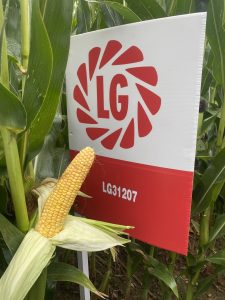
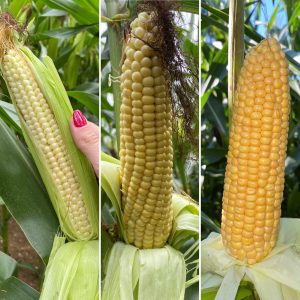
The new SFI schemes are prompting many conversations with our growers, especially around herbal leys and particularly SAM 3. Essentially, the new name for GS4 within the older Countryside Stewardship Scheme.
There are many mixtures available in the marketplace for growers to choose from that will be compliant with the scheme’s protocol. But it is not until you really pay attention to these mixtures and investigate what makes up their contents, that you see how different they all are.
A grower could end up with a herbal ley that grows just enough to require a topper over it once a year, or a herbal ley that will perform closer to the outputs of a conventional ley.
A frequent question from growers that are looking to sow a SAM3/GS4 herbal ley in place of a conventional grass ley is; can I maintain production whilst qualifying for the SFI scheme’s intentions, and be able to claim a payment?
In short, herbal leys simply will not match a top performing ley for yield or quality, but we know that we can get close with our mixtures.
Conventional grass mixtures have been designed and tested over many years using varieties that have been bred and cultivated over decades, such as our Circle leys, that have been true to their concept since 1947.
The best performing leys use varieties that complement and will grow together, in harmony. Scheme compliant mixtures simply do not have the ability to compete, whichever way you cut it – wildflowers and herbs will not yield, harmonise, or have the feed value in comparison with modern clovers and ryegrass.
You also have to factor in the animal’s desire to eat what is in front of it and whilst herbs sound ideal, too much is overpowering, and an animal will spend more energy looking for the alternative.
From our experience with CSS and lessons we have learnt, Nickerson and Limagrain have looked to get as close as we can with the mixtures.
First off, we use only seed of the highest quality and vigour and then design a herbal ley with the same approach as a conventional ley. Indeed, as for our SAM 3/GS4 mixtures we start with using one of our conventional leys as a base and remove/add in constituents to make it compliant.
We can also tailor a mixture to include more higher yielding and quality grasses and clovers and less productive legume types, herbs and wildflowers that will offer least in terms of production. We therefore offer different mixtures with different percentages of ryegrass and clover; all of which are compliant with the scheme but will suit growers’ requirements accordingly.
This year, I have been working with a grower, where we have been growing our multispecies 75 as seen in the pictures below.

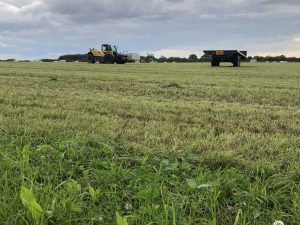
These photos were taken on the 3rd of August, and this was its 4th cut of the year already and two grazes. Yields were to a point of causing an issue of what to do with the excess! Quality is also very high.
So, can you have your herbal cake and eat it? Well, talk to your local Nickerson Seed Specialist to find out…
A Word on Grass from Douglas BonnAs a new year starts thoughts of the coming season are not far away and the development of a grazing wedge or a good first cut of silage should be at the forefront of plans.
The key driver for all soil nutrition is pH and this ideally should be sitting around pH 6.5. Regular soil testing must be carried out to manage this factor. The type of fertiliser used makes a huge difference to the pH of the soil. The use of Calcium Nitrate (CAN) fertilizer has a lesser effect on pH with 1Kg reducing soil pH by 0.4 points where 1 Kg of Ammonium Nitrate and Urea will reduce it by 1.2 points.
A grass ley overwintering with too much growth can cause problems with disease and winter kill. Sheep winter grazing to reduce winter cover is a useful tool but if the goal is for an early grazing wedge or early first cut of silage sheep should be taken off the grass before the end of January.
Even with the best winter management there will always be an amount of winter kill to manage. In the resent years the introduction and development of the spring tine harrow has revolutionised the management of a grass ley. Running a grass harrow over a sward in early spring will remove any dead grass so creating space for new tillers it will also stimulate the first few centimetres of soil so absorbing atmospheric nitrogen.
The grass plant will “wake up” before visible signs show above ground. Over winter a grass plant loses much of its root mass, and this is the first part of the plant to grow as it comes out winter. The first 40 days of this process is key to provide the plant with the infrastructure to give the plant the nutrition it requires for the season .
I’ve made some assumptions when looking at the nutritional requirement for first cut silage or the development of a grazing wedge. I have assumed that the pH is 6.5, the soil indices are +2 and the expected yield of first cut silage is 25 tonnes per hectare @ 30% dry matter. The plant will therefore require 120Kg nitrogen (if soil pH is less than 6.5 and calcium content is less than 2,000mg/L CAN should be considered as the source of nitrogen), 40Kg of phosphate as P2O5, 80Kg potassium as K2O and 30Kg of sulphur as SO3.

Grass Ley January

Grass Ley March
We are all too aware of the damage Cabbage Stem Flea Beetle (CSFB) can cause, it is fair to say that growers who have had no experience with this pest are few and far between and this year was no exception.
We started August with wet weather, which led to some growers drilling early to try and get the crop off and away from Cabbage Stem Flea Beetle. This has largely worked, consequently though there are some big canopies out there, which need to be carefully managed and growth regulators used where necessary.
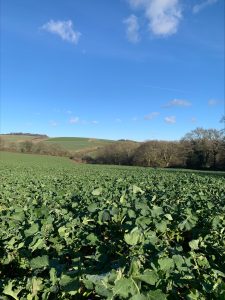
Early August drilled Ambassador near Newbury looking very well and was well enough established to grow through the main adult grazing period of cabbage stem flea beetle
If there is a suspected high larvae count, work by AHDB does show that defoliation either through grazing or flailing can lead to a significant reduction in larvae – although caution needs applied, as this should not be considered after stem extension.
Then we had some hot weather towards the end of August. This undoubtedly drives flea beetle migration and activity, which yet again coincided around the bank holiday weekend. Crops drilled this year, 10 days before and days after the bank holiday weekend have struggled most, from what I have seen.
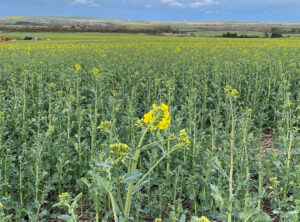
We then had wetter weather after the middle and end of September. This did lead to conducive growing conditions and these crops on the whole look okay, where not underwater. If crops are looking on the thin side, do not be disheartened just yet, OSR has an amazing ability to compensate for lost plants and fill-in gaps.
Slugs seem to have been more of a problem than Cabbage Stem Flea Beetle for some growers this year, thanks to weather conditions driving their activity. They really cannot be underestimated and require extreme vigilance early on.
In many cases, the crops were initially thinned by slugs and then the Cabbage Stem Flea Beetle attacked. The areas most devasted by slug damage are generally on the clay soils. However, the greatest risk and the most damage occurred where crops had been direct drilled with no tillage. In my opinion, any crop direct drilled – be it OSR, cereals or grass seed – increases the risk of slug damage significantly, compared to conventional establishment techniques.
We have all been aware of the cover crops and the use of slurry and digestate to deter the beetles, but I thought by far the most interesting piece of research this year was showing how beetle numbers can be reduced by cultivating the ground straight after harvest and during peak adult migration.
This would also have the added bonus of reducing slug numbers, which are always a significant nuisance to the following wheat crop.
Super trooper – LG maize thrives in the North EastJust like all of our customers, I get a really satisfying feeling looking across fields that are thriving. From a selfish point of view it’s also very gratifying to think that I have had a small part to play in a crop’s success. Mother nature plays a huge part of course, along with soil type, cultivation technique, drilling date and the subsequent agronomy decisions which need to be made along the way. Choosing the right variety, for the area, rotational slot; harvest date and forage use are where your local Nickerson Seed Specialist can help increase profitability on farm.
The diversity of the LG portfolio is as wide as it is tall, so understanding how best to express the genetic potential of the crop is an essential part of the decision making process.
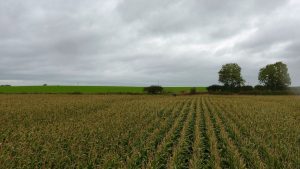
This crop of Trooper grown in the North East of England, is about two weeks away from harvest and the yield potential looks stunning. The grower needs an early harvest of high dry matter and high starch silage for a beef fattening unit and he needs it consistently year on year. This will be the third year that Trooper has fulfilled the brief and its potential. It’s great on farm – reliable, with decent yields and it is a highly digestible feed crop.
.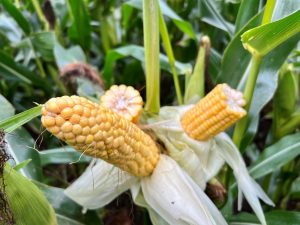
As the shed doors close after a challenging harvest ‘23 we have been busy sowing the Nickerson demonstration sites for the coming season.
We have three sites this year. In Aberdeenshire at Savock Farms, Ellon by kind permission of Andrew Booth.
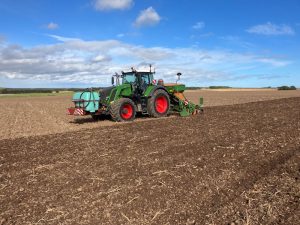
Savock Farms, Ellon
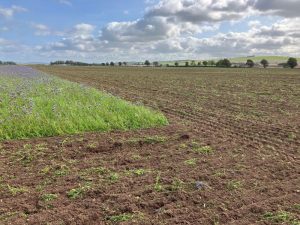
Barelees Farm, Borders
In Fife at Wellsgreen Farm by kind permission of WS & J Whiteford and in conjunction with Forth Crop Solutions and in the borders at Barelees Farm by kind permission of the Todd family.
At each site we have current popular varieties and new varieties to look at from both the Limagrain wheat breeding program as well as other breeders. Our focus this year has been on seed rates, so many varieties have been sown at different rates.
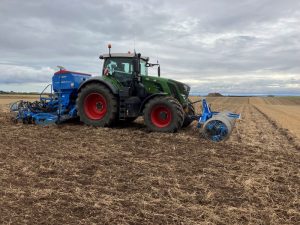
Wellsgreen Farm, Fife
Cultivation and the rotation position is different on each site. At Savock the demonstration is after winter oil seed rape, cultivated with a Simba XL and sown with an Amazon drill, at Wellsgreen the demonstration is following spring barley cultivated with Simba SL and sown with a Lemken power harrow drill. The Barelees site is after peas harvested in June and then sown in a cover crop. Most of the field was cultivated with a Terrano the day before sowing with an area left to allow us to drill into the cultivated area and directly into the cover crop with a Vaderstad Rapid.
Updates will be posted throughout the season but if anyone would like to visit any of the sites please contact either Nick or Douglas.
A word on stubble turnips from our Southern Sales Manager Jon Payne
A real joy in this job is to see my recommendations and our crop genetics working to provide solutions and performing for our growers. Such as this crop of Rondo and Sampson Stubble turnips also sown with Interval Rape/Kale Hybrid. It has been grown as a break crop between an old permanent pasture ahead of a planned Pro Plus grass ley which will be drilled this Autumn. Growing this break crop will lower the pest burden of leather jackets, frit fly and Wireworm for the pro plus reseed whilst also providing a huge feed source for the beef and sheep unit with grazing in situ. It also is giving more feed options and diversity for the grower within their rotation.
Pictured, Charlie, Jonathan’s son looking very pleased with his crop of Rondo & Samson stubble turnips!





